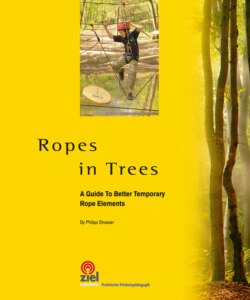Читать книгу Ropes in Trees - Philipp Strasser - Страница 6
На сайте Литреса книга снята с продажи.
ОглавлениеPreface
About 20 years ago, I introduced the term “zero accident” for high rope courses. As a mountain guide I found myself increasingly in a bind: my customers had great experiences but I was also confronted with serious accidents year after year. So I was very happy when my friend Bill Daniels introduced me to the “zero accident” concept. I wanted to share my enthusiasm with other colleagues … and met with widespread refusal! So it goes, sometimes, with new ideas!
I am very happy to see that, with this book, Philipp Strasser refutes a frequent argument: that it is actually possible to set up numerous elements while applying the Zero Accident concept.
One example: He recommends spotting the Mohawk Walk and similar Low Elements with 4 spotters for every participant. It is known that this element is often done without any belay at all. So reading this book, how does a facilitator feel? A logical consequence would be to change the belay concept and from now on work with a team of four spotters. Unfortunately, my observations of some rope course operators in Europe have, all too often, shown that, although there are accidents, there is often little motivation on the part of the operators to correct the situation. “If a child breaks his arm, well, that’s part of the game”.
Such accidents do not have to be “a part of the game” anymore. And such attitudes will not be acceptable as ropes courses gain popularity in the United States, where there is less public tolerance when it comes to operator liability. This book will help show how we can keep the participant’s experience exciting and rewarding while simultaneously reducing accidents.
In this book Philipp Strasser has only included established elements and processes, to which he has added a new level of safety, while, at the same time, preserving the essence of the participant’s experience. By adopting his ideas, future courses can be built that promise both great experiences, accompanied by reduced risks.
Walter Siebert
